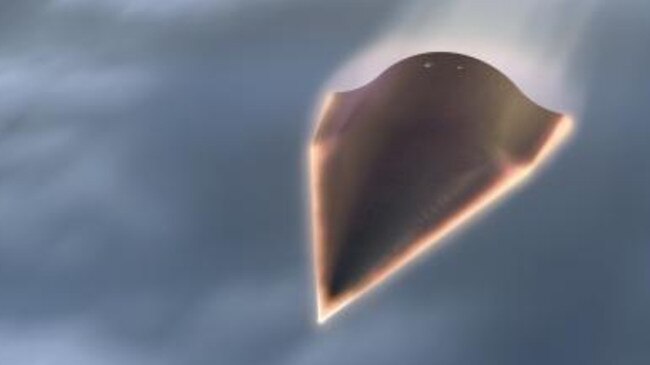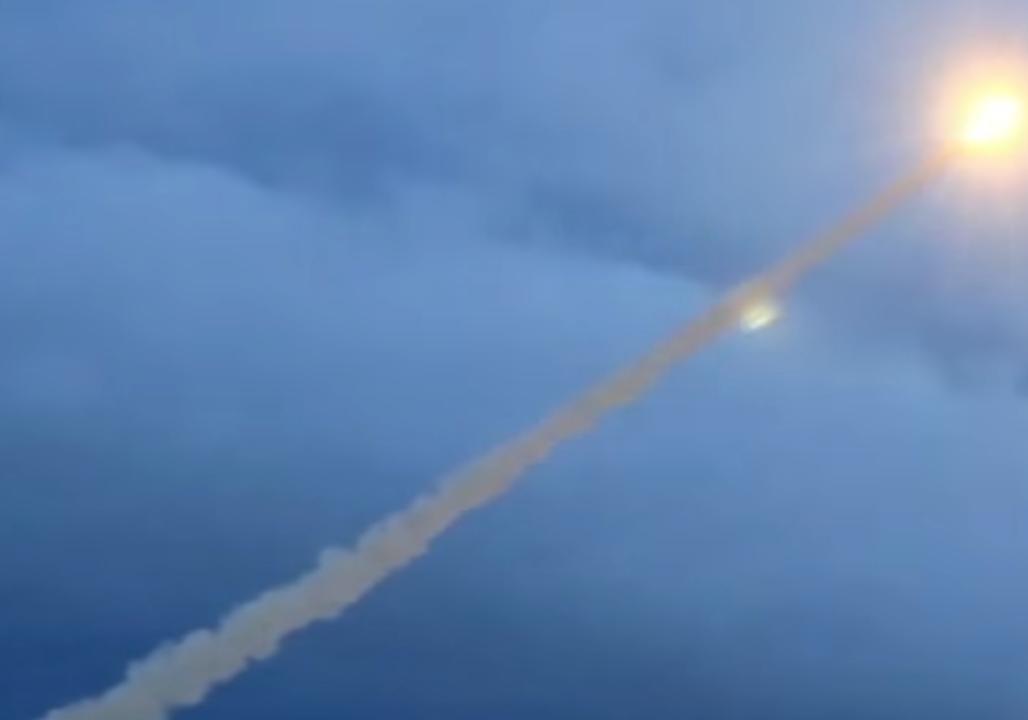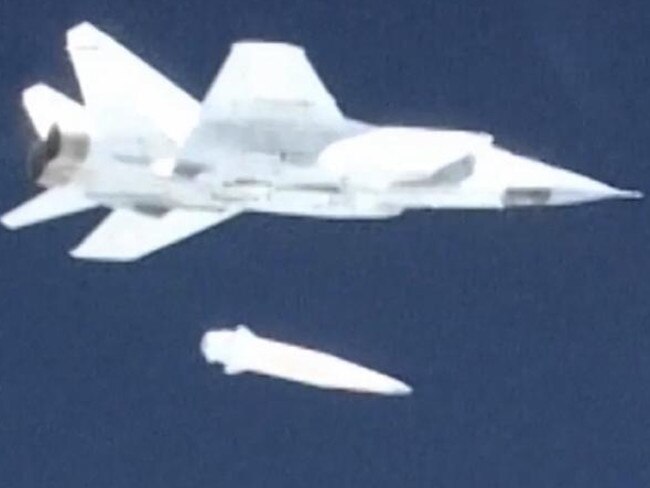The US needs to put more into the development of ‘invincible’ hypersonic missiles
THE US defence force has made a $330 million request for funding research to help develop “invincible” hypersonic missiles.

A HIGH ranking defence official has warned the United States is falling behind Russia and China as a new arms race involving “invincible” hypersonic missiles continues to develop.
Vladimir Putin’s claims that Russia has developed various hi-tech weapons capable of rendering NATO’s US-led missile defence system useless saw Defense Advanced Research Projects Agency director Steven Walker open up about the US’s own arsenal.
He said while the US has been developing hypersonic missiles around the clock at NASA’s Langley Research Centre in Virginia, more infrastructure was needed if the US was to create a weapon to match those being worked on by other superpowers.
“Most of our programs at DARPA [related to hypersonic research] are testing at one facility,” he said, reported Defense One.
“If you look at some of our peer competitors, China being one, the number of facilities that they’ve built to do hypersonics surpasses the number we have in this country.
“It’s quickly surpassing it by two or three times. It is very clear that China has made this one of their national priorities. We need to do the same.”
As it stands DARPA and the US Air Force have two hypersonic weapon concepts in the works.
The first is a Tactical Boost Glide weapon — a system that operates at five times the speed of sound and offers military operations longer ranges with shorter response times.
Essentially a rocket accelerates its payload to high speeds, then separates and allows it to glide unpowered to its target destination.

The second project is hypersonic air-breathing weapon concept (HAWC) which uses the technology of a scramjet engine — enabling hypersonic flight by taking in air at supersonic speeds and burning it without reducing it to below the speed of sound.
Mr Walker said the FY19 budget request has seen DARPA chasing $A330 million in funding for hypersonic research.
Of this amount, $A18.4 million would be put toward the HAWC project, while $A179.5 million would be for the Tactical Boost Glide program — both hope to have an operational prototype by 2019 and 2022, respectively.
Another $A64.3 million has also been requested to develop a ground-launched hypersonic system based on similar technology used in the Tactical Boost Glide program.
Additionally, DARPA got $A68.2 million for the Advanced Full Range Engine program, which hopes to create a hybrid engine that combines a traditional off-the-shelf turbine engine capable of supersonic speed with a dual-mode ramjet to transition to hypersonic flight.
“It’s basically developing the combined cycle propulsion system you would need for a reusable platform. We’re making good progress on that,” Mr Walker said.
He said there would be ground tests on the engine in 2019 or 2020.
“Whether we actually go to a flight demo, that’s not part of the program right now,” Mr Walker added.

WHAT IS THE HOLD UP?
Hypersonic missiles are capable of flying faster than 5000 kilometres per hour without losing maneuverability.
Such features enable the weapon to penetrate most missile defences and lessen the timelines for a response by a nation under attack.
The technology is so troubling that a report recently recommended “the United States, Russia, and China should agree not to export complete hypersonic missile systems or their major components”.
All three countries have clearly chosen to ignore such warnings, with each of the super powers working to develop the technology. But it’s not without struggle.
The biggest problem with the development of hypersonic weapons is learning how the interconnected metal and electronica behave when moving at such fast speeds.
Chief of staff for defence at the military’s High Performance Computing Modernisation program, Kevin Newmeyer, said supercomputers were needed to calculate how air and solid surfaces would interact.
“Instead of modelling a single aircraft, you have to model the surface and air in blocks as small as centimetres, millimetres. You join these calculations together in a cascading set of calculations,” he said.
And while Mr Walker admits supercomputers will ultimately help the development, physical testing is going to be needed to ensure the calculations are more reality than guesses.
“Another complicating factor in hypersonics is you can only simulate so much on the ground. It’s hard to get the velocity, the temperature, the mach number all correct as the vehicle would experience [them] in the air,” he said.
“We do component testing on the ground. We’ll do this engine testing on the ground. With hypersonics, you really have to fly.”

HOW CLOSE IS CHINA?
China’s military has been testing the DF-17 — a ballistic missile combined with a hypersonic glide vehicle (HGV).
An anonymous US government source told The Diplomat the weapon was tested on two different occasions.
In one of the tests the missile’s payload flew to a range of approximately 1400 kilometres, with the source saying the missile successfully made impact at a site in Xinjiang Province “within meters” of the intended target.
As HGVs stop short of entering space and they shoot down to Earth at hypersonic speeds, they pose challenges for early-warning satellites and missile-defence systems.
According to US intelligence assessments, the DF-17 is expected to reach initial operating capability around 2020, with the weapon expected to be capable of delivering both nuclear and conventional warheads.
Ðа боевое дежурÑтво поÑтавлен новейший гиперзвуковой ÐºÐ¾Ð¼Ð¿Ð»ÐµÐºÑ Â«ÐšÐ¸Ð½Ð¶Ð°Ð»Â» https://t.co/GCc57s3T36 pic.twitter.com/nKCzlXDHLW
— Телеканал "Звезда" (@zvezdanews) March 1, 2018
HOW CLOSE IS RUSSIA?
Putin claims to have a hypersonic glide vehicle known as Avangard.
It is possible this hypersonic glide vehicle was tested in September last year when it launched a RS-12M Topol ballistic missile with what it vaguely described as an “advanced combat payload”.
Putin also claims to have the ultimate long-range ‘standoff’ weapon, which he calls “Kinzhal”.
This hypervelocity guided missile which can be steered is capable of being carried by combat jets and has a range of 2000km and top speed at 10 times the speed of sound.
It’s supposed to have already been deployed to frontline military units.
Supporting this was video footage of an old Mig-31 “Foxhound” high-speed interceptor aircraft carrying a tubby bullet-shaped weapon.
Continue the conversation in the comments below or with Matthew Dunn on Facebook and Twitter.




